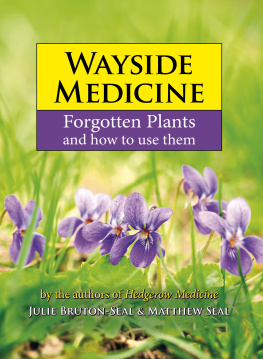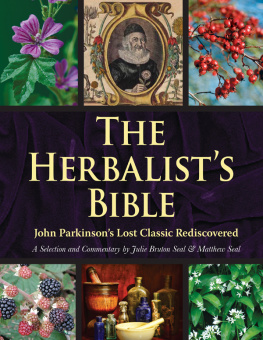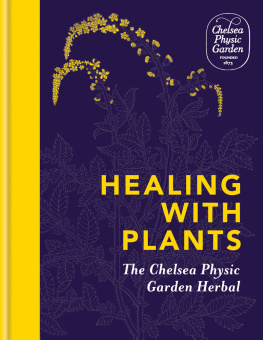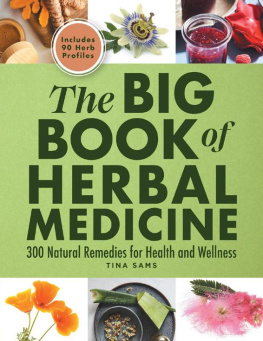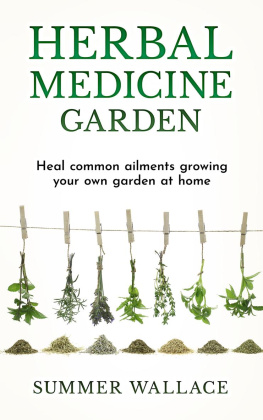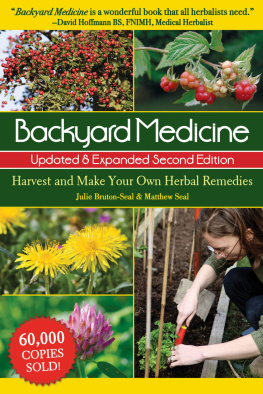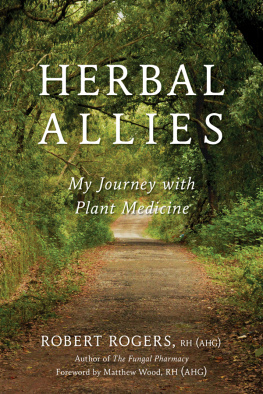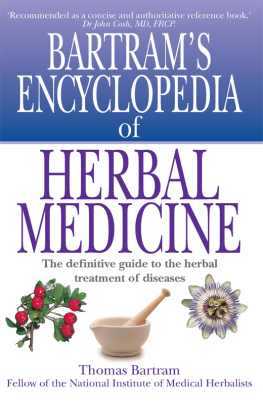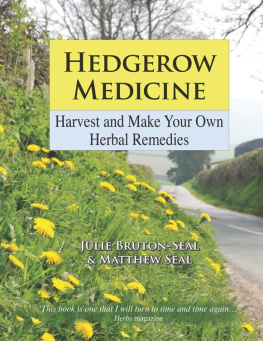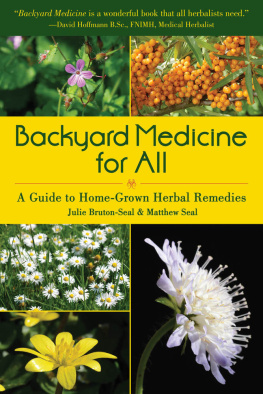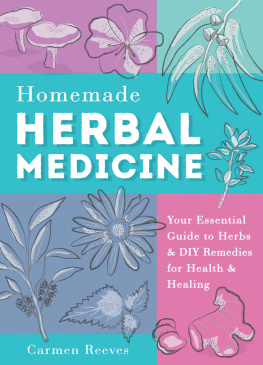
Rowan berries

A spring harvest of primroses
WAYSIDE MEDICINE
Forgotten Plants
and how to use them

Primrose leaf and flower
JULIE BRUTON-SEAL
MATTHEW SEAL

Contents
To the plants and all our other teachers

Country people heretofore did often use [ground ivy, above] to tun it up with their drink. But this Age forsakes all old things, though never so good, and embraceth all kind of novelties whatsoever; but the time will come, that the fopperies of the present time shall be slighted, and the true and honest prescriptions of the Ancients come in request again.
William Coles (1656)*
Rather than dismissing items of plant lore as quaint reminders of a more ignorant past, they should be seen as clues to an earlier, far more comprehensive knowledge of the use of plants.
Gabrielle Hatfield (1999)
* For all references and sources, see Notes to the Text, starting on
Preface
We wrote this book because we saw around us a wealth of plants growing abundantly, which have medicinal uses that people have largely forgotten. These plants were once valued and widely used, but over time fell out of fashion and were bypassed because of a focus on the herbs of commerce.
Many readers of our earlier book Hedgerow Medicine have noted our hint there that we had another 50 or more plants in mind for similar treatment. In Wayside Medicine we have made room for these and a few more, including cognate species in a single chapter such as primrose and cowslip; silverweed, tormentil and cinquefoil or family groups, eg cranesbills, speedwells and thistles.
This is in effect a sequel to Hedgerow Medicine, with a similar locale and rationale. It has the same layout, with its strong visual emphasis, and the same sequence of information. As the subtitle suggests, we focus on largely forgotten medicinal plants that grow by roads or paths in the countryside or in the city.
Wayside plant medicine may start for you with reading a book like this, but the aim is for you to go out and practise it. Even Mr Squeers, the almost-illiterate headmaster in Dickens Nicholas Nickleby, would agree. On Nicholas first day at school, Squeers says:
When the boys knows this out of book, he goes and does it. Wheres the second boy?
Please, sir, hes weeding the garden.
To be sure. So he is. B-O-T, bot, T-I-N, bottin, N-E-Y, bottiney, noun substantive, a knowledge of plants. When he has learned that bottiney means a knowledge of plants, he goes and knows em. Thats our method, Nickleby.
Third boy, whats a horse?
And where do we go and know for our practical lessons? To what the late Roger Deakin called the undiscovered country of the nearby. Waysides of old have become the road verges of today, and these everyday, nearby but overlooked ecosystems are significant wild plant communities.
Each chapter has an introductory section that puts the plant(s) into historical and botanical context, and its forgotten or traditional medicinal uses; the Use For section describes current medicinal applications; and a new final section, Modern Research, selects from published clinical work about the plant (mainly from the PubMed database). We dislike animal studies for several reasons but have included some as they can inspire further exploration.
The medicinal recipes have an important role. We subscribe to the advice of noted herbalist Christopher Hedley: Dont buy a herbal book if it doesnt have recipes! Making a medicine from it is the ultimate relationship with a plant, and we hope you will move from the armchair to the roadside, with due cautions noted, and try these recipes for yourself.
But, why forgotten plants? Mostly these are plants that were once in the herbal pharmacopoeia but have been dropped as chemical medicines replaced them, and as the pharmacopoeias themselves shrank. Once out of the official lists, plants are no longer commercially attractive and disappear from everyday use and familiarity.
Herbal knowledge has been declining since a peak in the mid-17th century, when John Parkinson included some 3,800 herbs in his great herbal. But we can do something about it. Contemporary American herbalist David Winston, writing in 2005, made a plea that we heartily endorse: One way of correcting this problem is the expansion of our pharmacopoeias by the inclusion of unused but effective indigenous and introduced species. There are hundreds of such herbs available that have long histories of usage by peoples who depended on these plants for their health and well being.
Winston offers about a hundred plants for an American extra pharmacopoeia. Indeed, several of them overlap with our choices (eg chicory, cow parsnip/hogweed, ground ivy, ox-eye daisy and purple loosestrife).
What are our rules for a plants inclusion in this book? We cover plants we have had experience of; local abundance on waysides (eg navelwort is common in the west but not otherwise in the UK); we wanted to include juniper and centaury but they are endangered in the wild, so we didnt; ease of identification; being nonpoisonous (eg we explain at length how other Apiaceae species differ from hemlock); and above-ground parts rather than roots.
Harvest with respect is our belief, so dont pick more than you need even where a row of hogweed stretches to the horizon along your roadside. It will be there tomorrow, unless the council mower happens to pass by.

Writing a book like this is a collaborative process, not only between ourselves as co-authors but also within a wider herbal community. Our heartfelt thanks go to: Julian Barker, Charlotte du Cann, Danny ORawe and Mark Watson for acting as expert sounding boards in our contents-selection process; to Julia Behrens, Alice Bettany, Andrew Chevallier, Nikki Darrell, Chris Gambatese, Barbara Griggs, Karin Haile, Simon Harrap, Glennie Kindred, 7Song, Cathy Skipper and Davina Wynne-Jones for herbal wisdom, freely shared; and to Christine Herbert for (as usual) reading every word and offering us acute comments and letting us photograph or pick plants in her smallholding. We also thank the Forgotten Herbs Facebook group, and forager friends Mina Said-Allsopp, Robin Harford and Monica Wilde.
To Merlin Unwin, Karen McCall and Jo Potter of Merlin Unwin Books our renewed thanks for getting the carrot/stick ratio just right.
We are grateful to a number of institutions, including the Wellcome Library, the British Library and the Norfolk County Council library service. We especially thank our local bibliographic treasure-house, the John Innes Historical Collections and outreach curator Dr Sarah Wilmot.
We have acknowledged sources in the Notes to the Text, and thank copyright holders for permission to include extracts from their work. If we have overlooked or been unable to locate copyright owners we will gladly add details in a later edition. Needless to say, the opinions expressed here are our own, and we take responsibility for them.
Next page
